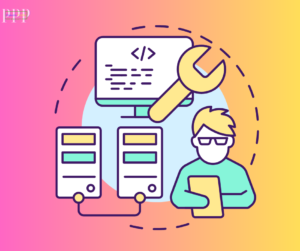Workflows are a fundamental feature within ZedNow, automating business processes, enhancing customer engagement, and streamlining operations. However, despite their power and versatility, workflows can sometimes malfunction or produce unexpected results. When this happens, the ability to efficiently troubleshoot and resolve workflow issues becomes critical to maintaining seamless business operations.
This comprehensive guide will help you master the art of troubleshooting workflows in ZedNow. We’ll focus on the most common issues, best practices, and steps you can take to ensure your ZedNow workflows run smoothly. Additionally, we’ll emphasize the importance of understanding triggers and actions, providing you with a robust toolkit to identify and resolve issues effectively.
What is a Workflow in ZedNow?
In ZedNow, a workflow is an automated series of actions triggered by specific events or behaviors. These workflows can range from simple tasks, like sending a follow-up email, to complex sequences involving conditional logic, tagging, and segmentation. Workflows eliminate manual tasks, save time, and ensure consistent communication with leads and customers. They also form the backbone of your marketing, sales, and customer service automation.

While workflows are indispensable, their complexity means that there can be several points of failure—whether it’s a misconfigured trigger, an incorrect filter, or an issue with time-based actions. Being able to troubleshoot these effectively is essential for ensuring your automations function as expected.
Why Troubleshooting Workflows is Essential
Imagine you’ve set up a workflow that is supposed to trigger an email after a lead fills out a form on your website. However, for some reason, no email is sent. Without a structured troubleshooting approach, figuring out why the workflow failed could become frustrating and time-consuming.
Effective troubleshooting offers several key benefits:
- Minimizes downtime: Quick issue resolution ensures your automations are back online without significant delays.
- Improves customer experience: Troubleshooting workflows promptly prevents breakdowns in communication, ensuring customers always receive timely and relevant messages.
- Enhances efficiency: Troubleshooting helps identify inefficiencies, allowing you to refine workflows for better performance and effectiveness.
- Prevents recurring problems: Addressing root causes prevents future workflow failures, improving overall system reliability.
The Essential Troubleshooting Checklist for ZedNow Workflows
To help you resolve workflow issues systematically, we’ve compiled a checklist that covers the most common causes of workflow malfunctions and the best methods to address them. Let’s explore each step in detail.
1. Test with a Fresh Contact
When troubleshooting workflows, it’s essential to use a fresh contact for testing. This is one of the most common yet overlooked aspects of workflow troubleshooting. Using the same contact multiple times during tests can lead to unpredictable results, especially if reentry is not allowed or if previous interactions affect the current test.
- Action: Always delete the old test contact and create a new one before running tests. This ensures that the workflow behaves as if it’s processing a new lead or customer, avoiding cached data or previously completed actions that might interfere with your test results.
2. Perform Live Testing
The “Test Workflow” button in ZedNow is useful for a quick check but has limitations. It doesn’t fully replicate real-world conditions, such as customer behavior, delays, or interactions that occur in live environments. To ensure your workflow functions correctly in actual scenarios, it’s best to trigger the workflow in a live environment with real contacts.
- Action: Run a live test by manually adding a contact, form submission, or another trigger that represents real-life behavior. Doing so will provide more accurate insights into how the workflow performs in practice.
3. Double-Check Filters in Triggers and Actions

Filters in workflows allow for granular control, ensuring that only specific actions are taken for certain groups or conditions. However, improperly configured filters can prevent workflows from triggering correctly or cause actions to be skipped.
- Action: Thoroughly check all filters in both the trigger and action stages. Ensure that conditions, tags, or specific criteria align with the actual data of the contact or lead. For example, if a workflow is supposed to trigger when a contact is tagged as “New Lead,” verify that the tag is applied correctly, and the filters are set to recognize this condition.
4. Review Workflow Settings: “Allow Reentry”
The “Allow Reentry” setting determines whether or not a contact can enter a workflow more than once. If this setting is disabled, the workflow will only run once for each contact, which can be problematic when testing or when a contact needs to reenter a workflow based on new actions or events.

- Action: Make sure “Allow Reentry” is enabled when you are testing workflows or if there are legitimate reasons for a contact to trigger the workflow more than once. If not, consider deleting the contact and creating a new one to simulate reentry.
5. Check Time-Based Actions
Workflows often involve actions that occur after a delay or at a scheduled time (e.g., sending an email 24 hours after a contact submits a form). Misconfigured time-based actions can lead to delays or failures.
- Action: Double-check all time-based actions, ensuring that the delays, dates, and times are set correctly. Ensure no conflicts arise from multiple time-based actions occurring simultaneously or interfering with each other.
6. Validate Conditional Logic
Workflows can include complex “If/Then” statements that direct actions based on specific conditions. However, if these conditions are misconfigured, they can cause workflows to behave unpredictably.
- Action: Review all conditional logic, including “If/Then” statements and branching workflows. Ensure that each condition leads to the correct actions and that the criteria used to define those conditions are accurate.
7. Review Workflow History and Logs

One of the most valuable tools in troubleshooting workflows is the workflow history and logs. ZedNow allows you to review past interactions with workflows, providing insights into which actions were taken and when.

- Action: Access the workflow history to see what triggered the workflow and whether each action was executed successfully. The logs can help you identify any errors or skipped actions, giving you a clearer understanding of what went wrong.
Common Workflow Issues and How to Resolve Them
1. Trigger Issues
The most common issue with workflows not running is related to the trigger. If the trigger condition is not met, the workflow will not start.
- Example: A workflow that’s supposed to trigger when a lead submits a form may not fire if the form’s submission tag or condition is incorrectly set.
- Solution: Double-check the trigger conditions to ensure they match the actual behavior of the contact or lead. For instance, ensure that the form submission tag is correctly applied or that the correct field is being used for filtering.
2. Overly Complicated Workflows
While it’s tempting to create intricate workflows with multiple steps, complex workflows can lead to unintended issues such as missed actions, delays, or failure points.
- Solution: Simplify your workflow wherever possible. Break complex workflows into smaller, modular components. Test each component individually before integrating them into a larger workflow.
3. Incorrect Tags and Segmentation
In ZedNow, workflows often rely on tags to segment contacts and personalize actions. However, if a tag is incorrectly applied, the workflow may fail to trigger or execute actions incorrectly.
- Solution: Review all tags and segmentation conditions within your workflow. Ensure that contacts are appropriately tagged based on the actions they take and that the workflow conditions reflect the correct tagging logic.
4. Unanticipated Delays
In some cases, workflows may work, but with unexpected delays due to scheduling issues. These delays can make it seem like the workflow isn’t functioning when in reality it’s waiting for the scheduled time.
- Solution: Review the timing of all scheduled actions. Make sure that any delays or scheduled actions are consistent with your expectations and that no conflicts exist between different time-based actions.
The Benefits of Troubleshooting Workflows in ZedNow
1. Seamless Automation
When workflows run without issues, your entire business can benefit from seamless automation. Troubleshooting helps you resolve issues before they affect the customer experience, ensuring that communications are sent on time and without error.
2. Improved Efficiency
Effective troubleshooting minimizes downtime, reducing the need for manual intervention. Once a workflow is repaired, you can trust that it will continue running efficiently, automating tasks and improving productivity.
3. Personalized Customer Experience
With workflows, you can tailor interactions based on a contact’s behavior, preferences, or status in the sales funnel. Troubleshooting ensures that this personalization occurs as expected, enhancing customer satisfaction and engagement.
4. Fewer Errors and Less Frustration
Workflow errors can lead to missed opportunities, delayed responses, and customer frustration. By addressing issues early through troubleshooting, you reduce the likelihood of errors and improve the overall reliability of your automation.
Conclusion: Mastering Workflow Troubleshooting for Success
Troubleshooting workflows is an essential skill for anyone using ZedNow’s automation features. Whether you’re resolving trigger issues, misconfigured filters, or time-based action delays, having a structured approach allows you to quickly identify and resolve issues, ensuring that your workflows run smoothly. By mastering troubleshooting, you unlock the full potential of your ZedNow workflows, creating more efficient automations, enhancing customer interactions, and improving overall business performance.
With the troubleshooting checklist and strategies outlined in this guide, you’ll be better equipped to maintain and optimize your workflows, ensuring your business continues to operate at peak efficiency.



